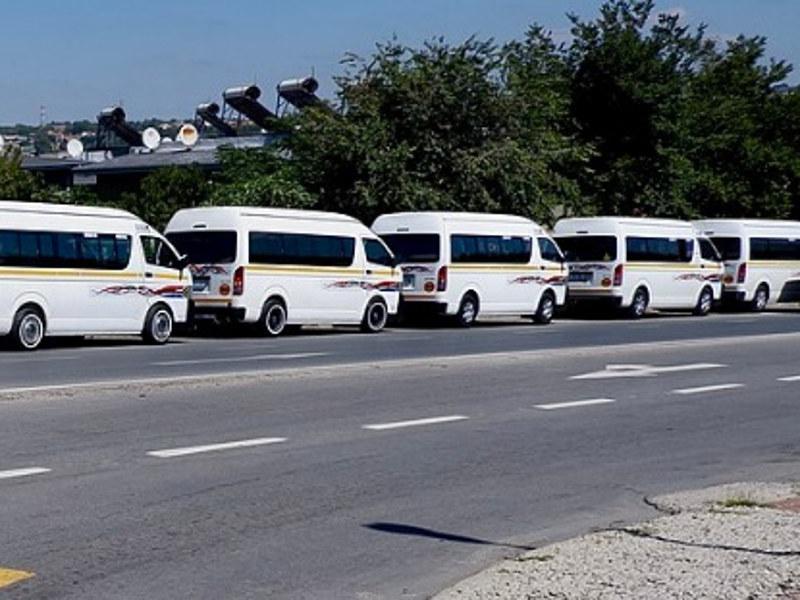It might be a while before we see electric minibus taxis on South Africa’s roads, but when the time comes, the country will be able to tap into our abundant solar energy resources to power them.
This is according to researchers from Stellenbosch University (SU) who conducted the first study on the energy requirements of electric minibus taxis on journeys within and between towns and cities in South Africa.
“Given South Africa’s abundant sunlight, we have an excellent chance of harnessing this renewable energy source to power electric vehicles,” said lead researcher Prof Thinus Booysen from SU’s Department of Electrical and Electronic Engineering. He conducted the study with Chris Abraham, Arnold Rix and Innocent Ndibatya from the same department.
The findings of their study were published recently in the journal Energy for Sustainable Development.
The researchers used GPS tracking data and a traffic simulator to evaluate the electrical demand requirements of electric minibus taxis, the proportion of this demand that can be met by renewable energy, as well as the informal and formal stops at which the taxis can recharge.
They also used the mobility results– including distance, travelling time and idle time – in a solar photovoltaic (PV) simulator to establish the potential for charging with grid-connected solar PV, without stationary battery storage, at these stops.
The researchers also tracked minibus taxis operating on bidirectional routes connecting Stellenbosch, Brackenfell and Somerset West in the Western Cape.
To simulate the taxis’ mobility between the three towns and subsequently study their energy requirements, they generated the routes linking the identified stops. An electric vehicle model was then applied to these generated routes to determine the average power usage profile of a fleet of nine electric minibus taxis at various points in time.
How much power does a taxi use?
The researchers’ results show that the mean energy demand of the taxis was 213 kWh per day – equivalent to the daily usage of 10 middle-class households – resulting in average efficiency of 0.93kWh per kilometre.

They added that taxis stopped for between 7.7 to 10.6 hours per day – with the stopping time across taxis used as a proxy for charging opportunities.
The energy supplied per surface area of PV or solar installation to offset the charging load of a taxi while stopping ranged from 0.38 to 0.90 kWh/per square meter per day. This is enough energy over a day to boil two to six kettles of water for each square meter of PV.
“We found that the maximum daily impact that a taxi would have on the power grid is approximately 500kWh per day – enough to provide an average household with electricity for a month,” said Booysen.
“For 75% of the time, the impact would be less than 300 kWh per day. This impact can be reduced by using solar energy. The actual battery of the taxi could be considerably smaller than the daily energy usage, since the taxi can be charged during the day at its longer stops.”
How will the taxis be charged?
Booysen said that a charger of around 32 kW would be required. This means that the total fleet of South Africa’s minibus taxis would use around 10% of the daily national energy generation.
This may not seem like a lot, but it would cover approximately 70% of the country’s commuter trips, while incentivising investment into renewable energy infrastructure, he said.
“Given the estimated 285,000 taxis in South Africa, our analysis indicates that to charge all the minibus taxis from the national grid will require 9.72% (61,27GWh) of the current daily national energy generation. The average taxi would be able to directly utilise between 57% and 80% of installed PV generation capacity during normal stops.”
According to the researchers, a solar installation equivalent to half a tennis court would be required per taxi to ensure that the taxi’s daily energy requirements are met by solar supply at least 50% of the time. They say solar panels would be installed at taxi ranks and informal stopping areas.
As far as the demand for electricity is concerned, they point out that it peaked from 06h00 to 09h00, with a peak value of 32 kW. It diminished from 09h00 to 13h00 when taxis are stationary.
“This demonstrates the potential for charging, particularly with solar energy, due to the much sunlight at midday. This is followed by a gradual increase to a peak value of 30 kW between 17:00 and 18:00,” said Booysen.
The researchers add that complete inactivity was observed from 23h30 to 04h30.This hints at substantial charging potential during the evening – probably from grid power – and during the middle of the day – preferably from solar power.
“Our results can be used not only by scientists, but also by grid operators, traffic planners, fleet owners and private entities to obtain the financial, environmental, electrical, and mobility impacts of electric-vehicle rollouts of varying scales.”
Read: Two petrol price changes proposed for South Africa




